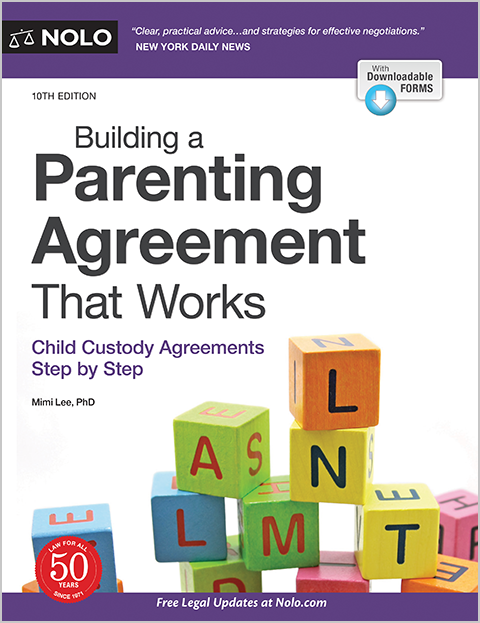Learn more about how to adopt a child, including how home studies work and what to expect in court.
You can bring a child into your life in many ways. You might have a biological child with a partner, use assisted reproductive technology to have a child on your own or with a partner, rely on a gestational surrogate, or adopt a child.
There are different types of adoption, and some adoption procedures vary based on type. For example, an agency adoption will require different steps than an international or stepparent adoption. Still, many of the procedures are similar. Here is a rundown of some of the most common adoption procedures.
Every Adoption Has One Thing in Common: Consent
Although it may seem like adoptions are primarily about the adoptive child and prospective family, the birth parents play a vital role. Parental rights are some of the most highly protected legal rights. For any adoption to be legal, the birth parents must consent to permanently terminate (end) their parental rights. The only time parental consent is not required is if a court has already revoked parental rights for other reasons, like abuse or neglect, after a court hearing.
Consent may be the most emotional and complicated step in the adoption process. Most states require parents to wait until the child is born before consenting to the adoption, some even allow biological parents up to three months to revoke consent. Because consenting to adoption is such an emotionally fraught issue that affects so many people, some states require biological parents to undergo counseling before allowing them to consent to adoption.
If you have questions about when and how birth parents can consent to an adoption, check your state laws, contact an adoption agency, or, preferably, meet with an attorney who specializes in adoptions.
The Home Study
Every parent must complete a home study before adopting a child. A home study educates and evaluates the adoptive family to make sure the adoption is in the child's best interest. A licensed social worker or another state agent will typically complete the study. You'll need to provide a lot of information, including:
- consent to perform a federal criminal background check
- detailed statements to demonstrate financial stability
- medical questionnaires from the family
- birth certificates
- marriage license (if applicable)
- child abuse clearances, and
- personal references.
Your home study representative will also meet with you at your home on at least one occasion. The purpose of the home visit is to ensure that your house, and everyone living in it, are prepared to welcome a child and that you're ready and fit to parent. The entire home study process may take as few as a couple of months or can take up to a year to complete. Many states waive the home study requirement for stepparent adoptions.
Although the home study agent has the power to write a positive or negative review, it's the court that makes a final decision about your ability to adopt a child. If you're unhappy with the result of your home study, you can appeal it through the court. Some states allow parents to file a separate appeal, while others make it a part of the adoption process.
The Legal Process
Regardless of the type of adoption, every case must receive court approval before the adoption can become final. The adoptive parents must submit a petition (request) for adoption to the court, pay the filing fees, and go through the hearing process before a judge. The purpose of the hearing is for the judge to verify that the adoptive parents meet all state requirements.
Step One: Notice
Before the adoption hearing may take place, the adoptive parents must provide notice of the hearing to anyone legally involved in the child's life. In most cases, you must send notice to the child's biological parents, legal guardian, adoption agency, and in some cases, the adoptive child (depending on the age.) Check with your adoption representative or attorney to learn about your state's specific notice requirements.
Step Two: The Adoption Petition
You'll work with your adoption agency or attorney to complete the adoption petition. The petition generally includes:
- names, ages, and residences of the adoptive parents, the child, and the birth parents
- a statement that the adoptive parents understand their rights and duties
- the legal reason for terminating the biological parent's rights
- the relationship between the adoptive parents and child (such as non-familial or stepparent)
- a statement that the adoptive parents are the best caregivers for the child, and
- a statement that the adoption is in the child's best interest.
It's important to include a copy of the biological parent's written consent to the adoption with your petition. If the court involuntarily terminated parental rights, you should include a copy of the court order. Lastly, in most cases, the adoptive parents would like to change the child's name, which can be done by filing a request for a name change with your adoption petition.
The Last Step: The Hearing
In most cases, the court hearing is a simple formality, but it can be an exciting and life-altering day for the new family. The judge will ask the adoptive parents, under oath, if they understand the impact of the adoption, including their legal rights and obligations. If the court finds that the adoption is in the child's best interest, the judge will sign the adoption order, and if necessary, an order for a name change.
Getting Help With Joint Custody
If you're hoping to adopt a child, your best path forward is to talk to a family law attorney who has experience with adoptions. An adoption lawyer can answer your questions and walk you through the legal procedures for each type of adoption in your state. An adoption lawyer can also prepare you for a home study and handle the necessary paperwork.

